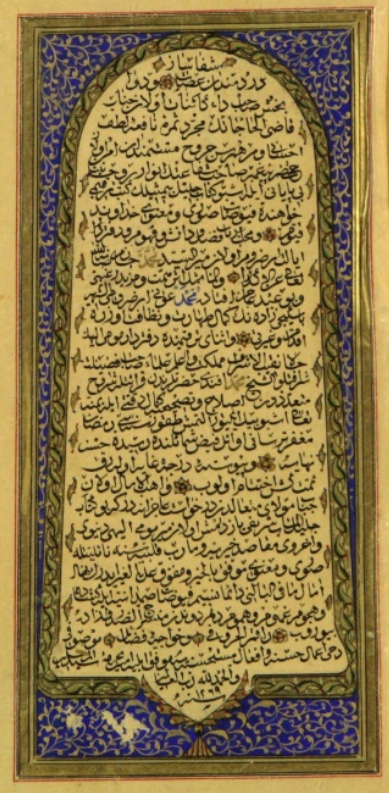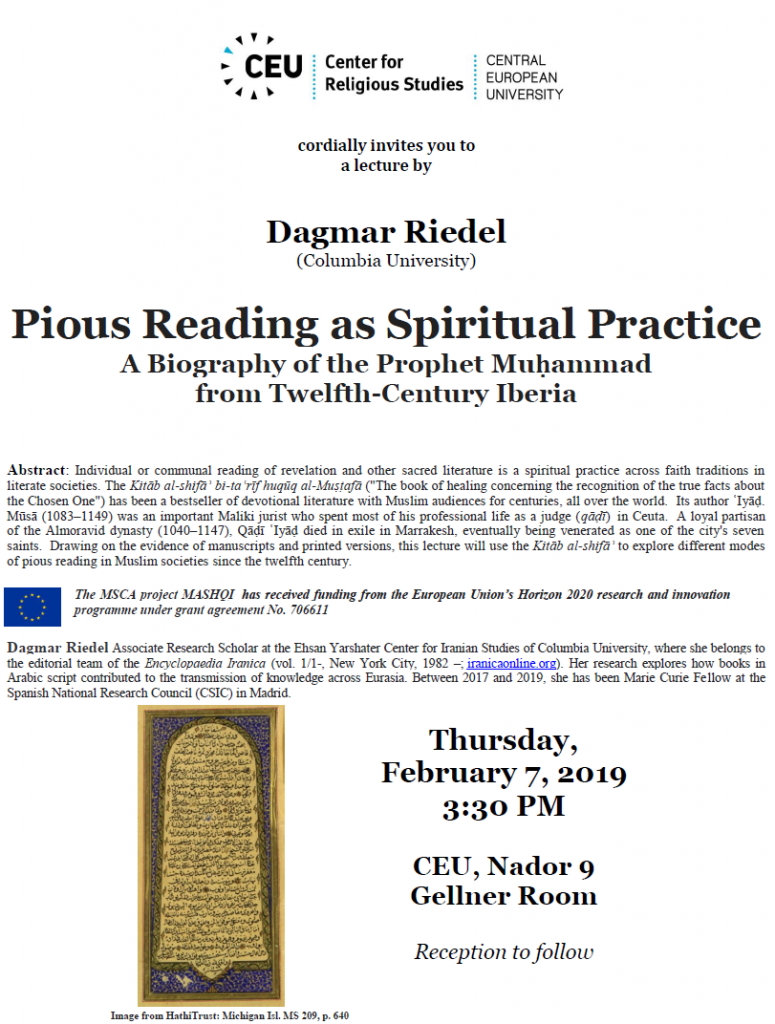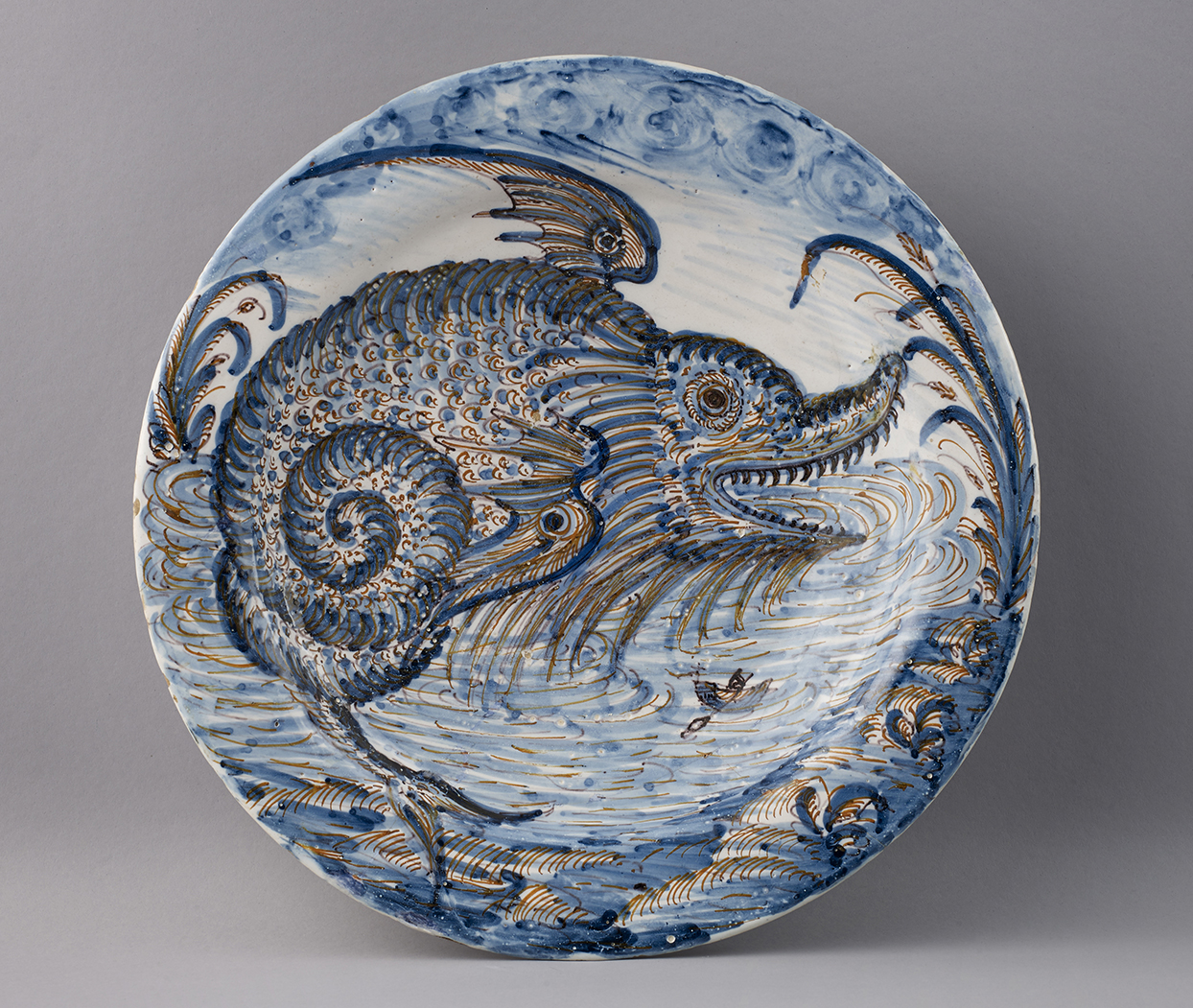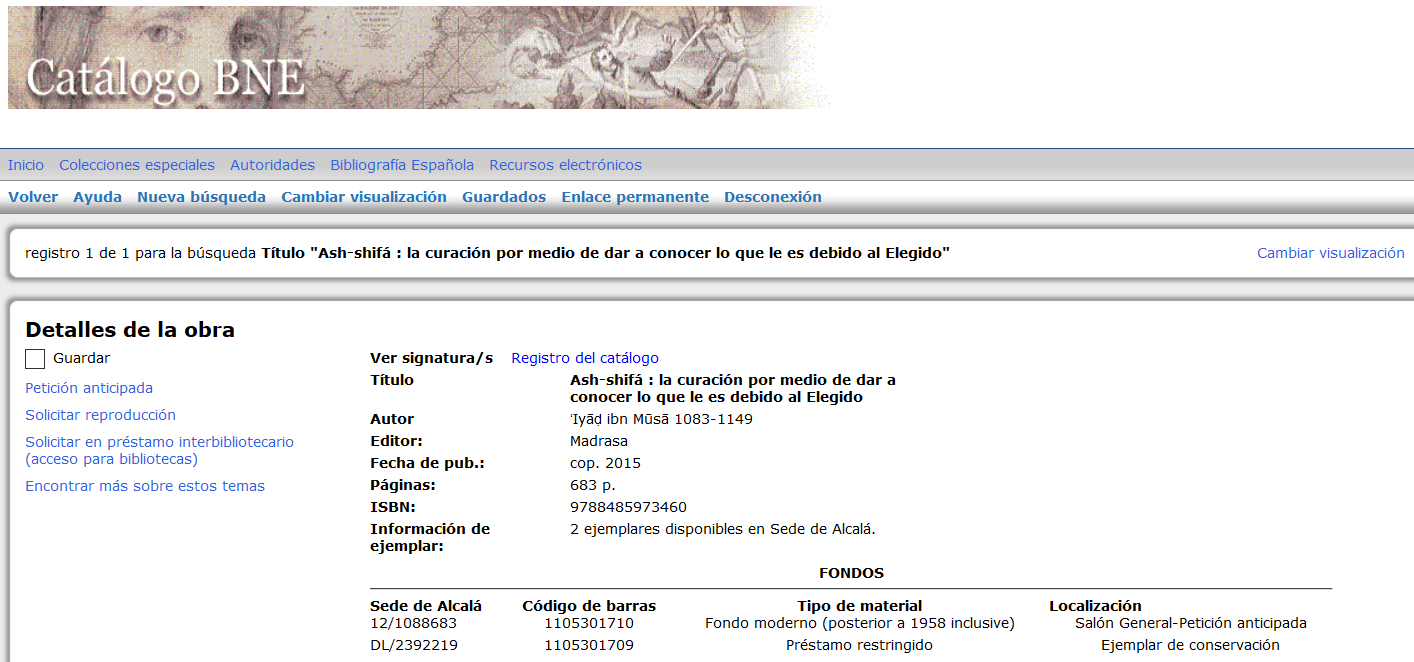On 31 January 2019, my Marie Curie Fellowship ended after twenty-four months. The Horizon2020 rules for the MSCA Individual Fellowships stipulate that after sixty days the host institution and its Marie Curie Fellow have to submit a final report to the European Commission. This report comprises a public summary, eventually to be published on CORDIS (https://cordis.europa.eu/project/rcn/206308/factsheet/en), and a confidential technical account, the financial part of which is inaccessible to the fellow. The grant’s final installment will only be released to the host institution, if it is decided, on the basis of this final report, that the fellowship was successful. Below follows an advanced draft of the public summary, which is not yet structured in accordance with the public summary’s checklist. For the time being, scholars can apply for a Marie Curie Fellowship at any point of their career. In keeping with the terminological conventions of Horizon2020 and the MSCA, Marie Curie Fellows are called Experienced Researcher (ER), even if they are less than seven years after the receipt of their degree (cf. the NEH distinction between junior and senior scholars). However, a Marie Curie Fellow cannot be the Principal Investigator (PI) of her grant, since the fellowship is awarded to the host institution where her sponsor is responsible for the budget.
Making Books Talk: The Material Evidence of Manuscripts of the Kitāb al-shifāʾ by Qāḍī ʿIyāḍ for the Reception of an Andalusian Biography of the Prophet between 1100 and 1900
The project explored the transformation of an early twelfth-century Arabic treatise on Islamic dogma (Ar. ʿaqīda), which was written in the Islamic West, probably in the port city of Ceuta (Ar. Sabta), North Africa, into a work of pious literature that today is studied by Sunni Muslims all over the world. The Kitāb al-shifāʾ bi-taʿrīf huqūq al-Muṣṭafā (“The book of healing concerning the recognition of the true facts about the Chosen One”) was composed by ʿIyāḍ b. Mūsā al-Ḥāfiẓ Abū’l-Faḍl al-Yaḥṣubī al-Sabtī (1083–1149 CE), also known as Qāḍī ʿIyāḍ. Serving as a judge (Ar. qāḍī) in his hometown Ceuta between 1121 to 1147, as well as for less than a year, between 1135 and 1136, as a judge in Granada, Spain, Qāḍī ʿIyāḍ was a celebrated jurist of the Maliki school of law with a particular interest in historical accounts (Ar. ḥadīth “story, tradition”) about the prophet Muḥammad (d. 632).
Societal Relevance. The project’s publications provide concrete historical context for the current debates on religious diversity and Islamophobia in western societies. On the one hand, the Kitāb al-shifāʾ is associated with Iberia before 1500, when Jews, Christians, and Muslims were still living, mostly peacefully, next to each other in societies with a high degree of religious and linguistic diversity. Consequently, the project used a comparative approach to situate the Kitāb al-shifāʾ, as a biography of the prophet Muḥammad, in interdenominational discussions about false and true prophets, because Judaism, Christianity, and Islam, the three monotheistic religions, agree that prophecy is one means of divine revelation. On the other hand, the project traced the diffusion of the Kitāb al-shifāʾ in a long-term perspective, from the twelfth century to the present. The focus on the work’s reception allowed the project to refute the widely repeated claim of Islam’s essentially unchanging and unchangeable “medieval nature,” commonly adduced as the reason as to why Islam and modernity are irreconcilable, by documenting how over time Muslim readers changed their approaches to and their understanding of the Kitāb al-shifāʾ.
Scholarly Relevance. The project selected the Kitāb al-shifāʾ, because it is an important twelfth-century source for the history of the Islamic West which never dropped out of circulation. In publications on the legal and political history of Iberia and North Africa during the transition from the rule of the Almoravids (1061–1147) to that of the Almohads (1130–1269), scholars of Islam in Iberia—among others, Maribel Fierro, Cristina de la Puente, Delfina Serrano, Camilo Gómez-Rivas, and Javier Albarrán—draw on the work. To this day Malikis continue to teach the book as a work of hadith scholarship and theology (Ar.ʿilm al-kalām), and yet, it has also transcended its historical and regional origins. As documented by dated manuscript evidence, the Kitāb al-shifāʾ circulated widely in the Islamic East, outside Maliki circles, from the thirteenth century onwards, and became—in the words of Annemarie Schimmel (1922–2003), a renowned scholar of Islam on the Indian Subcontinent—“perhaps the most frequently used and commented-upon handbook in which the Prophet’s life, his qualities, and his miracles are described in every detail” (And Muḥammad is his Messenger, 1985, p. 33). Muslim publishers continually issue new printed versions, ranging from various editions of the Arabic text to translations into English, French, German, Spanish, Urdu, or Malay, while the number of digital surrogates of manuscripts and nineteenth-century printed versions available in digital depositories on the Internet is steadily increasing.
Feasibility. For some of the most important works of Islamic literature that were written in the Islamic West, just a single manuscript has been preserved. Famous examples are the only known Arabic translation (ed. ʿA. al-Badawī, Beirut, 1982; and ed. M. Penelas, Madrid, 2001) of the Latin universal history Historiae adversum paganos (“History against the pagans”) by the Christian historian Orosius (active early 5th century); the love story of Bayāḍ and Riyāḍ (ed. A. d’Ottone, Vatican City, 2013); and the Ṭawq al-ḥamāma (“The ring of the dove”), a treatise on love by the philosopher Ibn Ḥazm (994–1064; cf. J. J. Witkam, “Establishing the stemma,” Manuscripts of the Middle East 3, 1988, pp. 88–101). In contrast, hundreds of Kitāb al-shifāʾ manuscripts are preserved in accessible collections worldwide. The rich manuscript tradition offers the invaluable opportunity to study the Kitāb al-shifāʾ’s diffusion in a long-term perspective.
State of the Art. The Kitāb al-shifāʾ’s enduring popularity with Muslim readers from the thirteenth century onwards had not yet received any attention from scholars in Middle Eastern and Islamic Studies. On the one hand, popularity is often mistaken as an indication that a literary work has already been comprehensively studied. But so far, the Kitāb al-shifāʾ has been primarily valued as a source, which seems so well-known that nothing really new or original could be said about it. On the other hand, the Kitāb al-shifāʾ is a comparatively late addition to the already substantial corpus of literature about the prophet’s life (Ar. sīra), of which the oldest known works were compiled in the late seventh century. Even though Middle East historians are nowadays firmly committed to overcoming the Orientalist paradigm according to which “the West” generated knowledge about “the East” in order to perpetuate its global economic and political power, the contemporary western discourse on Islam and Muslim societies has remained anchored to the premise that the intellectual decline of the Islamic civilization from the thirteenth century onwards is one of the root causes for the undeniable socio-economic and political problems of twenty-first century Muslim societies in Eurasia and Africa. The negative view of the Islamic civilization between the thirteenth and nineteenth centuries has ensured that these centuries are perceived as a middling period and attract fewer scholars so that much less is known about them.
Objective. Taking as a starting point the observation that the Kitāb al-shifāʾ is effectively invisible in scholarship as a work in its own right, the project adopted a change of perspective. The work’s rich manuscript tradition was approached as a hitherto neglected opportunity to review established notions about the work and its author. On its most general level, the project is designed as a proof-of-concept study. Its main objective was to demonstrate that even for a well-known work like the Kitāb al-shifāʾ examining accessible manuscripts will generate fresh insights which, in turn, significantly advance our understanding of the intellectual and cultural history of the Islamic civilization, since they challenge, and often outright refute, received opinion. In addition, the project highlights that manuscripts of popular works in accessible collections in Europe and North America are an underused “hidden” resource with great research potential.
Methodological Contributions. The project’s methodological approach was based on the hermeneutic principle that historical facts about a work’s origins cannot be deduced from historical evidence for its later circulation, as composition and reception are different stages in a work’s life cycle. But historical facts about a work’s circulation can, in a second step, support conjectures about its origins, thereby opening new avenues for further research. With regard to the Kitāb al-shifāʾ, the project confronted two diametrically opposed challenges: on the one hand, the complete lack of internal or external evidence for the concrete circumstances in which Qāḍī ʿIyāḍ wrote the Kitāb al-shifāʾ in the first half of the twelfth century, and, on the other hand, a rich manuscript tradition for the book’s diffusion from the thirteenth century onwards. In order to address both challenges simultaneously, the project combined the methodologies of manuscript studies with those from the Digital Humanities. New concrete facts for the Kitāb al-shifāʾ’s diffusion were gleaned through the hands-on examination of its manuscripts, in particular dates and places for the production of manuscripts, or proper names and places for owners or readers. With the help of a cataloguing template and a Data Management Plan (DMP), these diverse historical facts were systematically recorded as “data” so that they can be preserved in online repositories for future reuse (e.g., computational semantic analysis).
Historical Contributions. The project has yielded surprising new insights into the evolution of pious literature, reading practice, and religious education in connection with the veneration of the prophet Muḥammad from the twelfth-century onwards. The diffusion of the Kitāb al-shifāʾ was plurilinear, since the work could accommodate orthodox Maliki as well as more fluid Sufi readings. In other words, the general Sunni reverence for the Kitāb al-shifāʾ, which is so richly documented from the fifteenth century onwards, was independent from the work’s Maliki origins in the Islamic West. But the recent attention paid to possible connections between the Kitāb al-shifāʾ and Qāḍī ʿIyāḍ’s tenure as a judge in Granada—the city which thanks to the Alhambra is perhaps most vividly associated with the flowering of the Islamic civilization in Iberia—marks a new stage in the work’s reception, as it reflects the active appropriation of “al-Andalus” as a central site of communal memory for Muslims in Europe and North America in the twenty-first century.
Work and Dissemination. The Experienced Researcher (ER) and her sponsor worked on the project. In consultation with the Digital.CSIC, the ER wrote a cataloguing template and a DMP to organize and standardize the manuscript descriptions for a future online database, which will supplement the project’s publications about the Kitāb al-shifāʾ and can be analyzed with computational tools (e.g., mapping, visualization). In collaboration with a colleague from the Universidad Complutense de Madrid, the ER organized in Madrid a two-day international workshop about the comparative study of Jewish, Christian, and Muslim literatures about prophets and saints from Iberia between 600 and 1600. They are now preparing for publication in 2020 a co-edited collective monograph with articles based on selected presentations. The ER examined Kitāb al-shifāʾ manuscripts in Spanish, German, American, Dutch, and British libraries. She participated in six conferences in Spain, Germany and the USA; in four workshops in Germany, Spain, and the Netherlands; in two seminars in the USA and in Spain; and in one panel discussion in Germany. As regards outreach and dissemination, the ER wrote about the project on her research blog, and selected posts are available in the Digital.CSIC and the Academic Commons of Columbia University (USA). She completed one article about the Kitāb al-shifāʾ in Ottoman book culture, which is in press and will be published later this year, and is currently completing two more articles; the three articles will be made available in Green Open-Access.

This project has received funding from the European Union’s Horizon 2020 research and innovation programme under grant agreement No. 706611.












